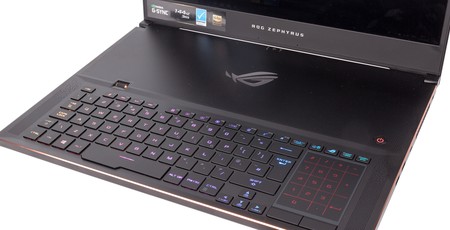
Manufacturer: Asus
UK price (as reviewed*): £2,880.00 (inc. VAT)
US price (as reviewed*): $2,799.99 (exc. tax)
*reviewed unit contains 24GB DDR4 (8GB + 16GB); units linked above contain 16GB DDR4 (8GB + 8GB)
The Asus ROG brand is one associated with premium, high-end hardware, and the Zephyrus S GX701 looks to reaffirm that. Inside you’ll find none other than Nvidia’s mighty RTX 2080 Max-Q. This is joined by a six-core Intel CPU, a healthy helping of DDR4, and a 144Hz G-Sync panel with a claimed 3ms response time, and it’s wrapped in a stylish looking chassis that has made conscious design choices in the name of cooling all that hardware while also keeping dimensions down.

Different versions of the GX701 are available depending on your region. Our sample is the GX701GX with 24GB DDR4 and a 1TB SSD, but this isn’t easy to find or buy in the UK, so we’ve linked instead to the 16GB version that’s otherwise the same. Note also that our one uses an 8th Gen Intel CPU. Asus has since refreshed the GX701 with a 9th Gen Intel CPU and 32GB of RAM, but this seems to have pushed the price of the 8th Gen unit here down from well over £3,000 to £2,900 (less in the US). Still ultra-premium territory, then, but slightly less ultra-premium?
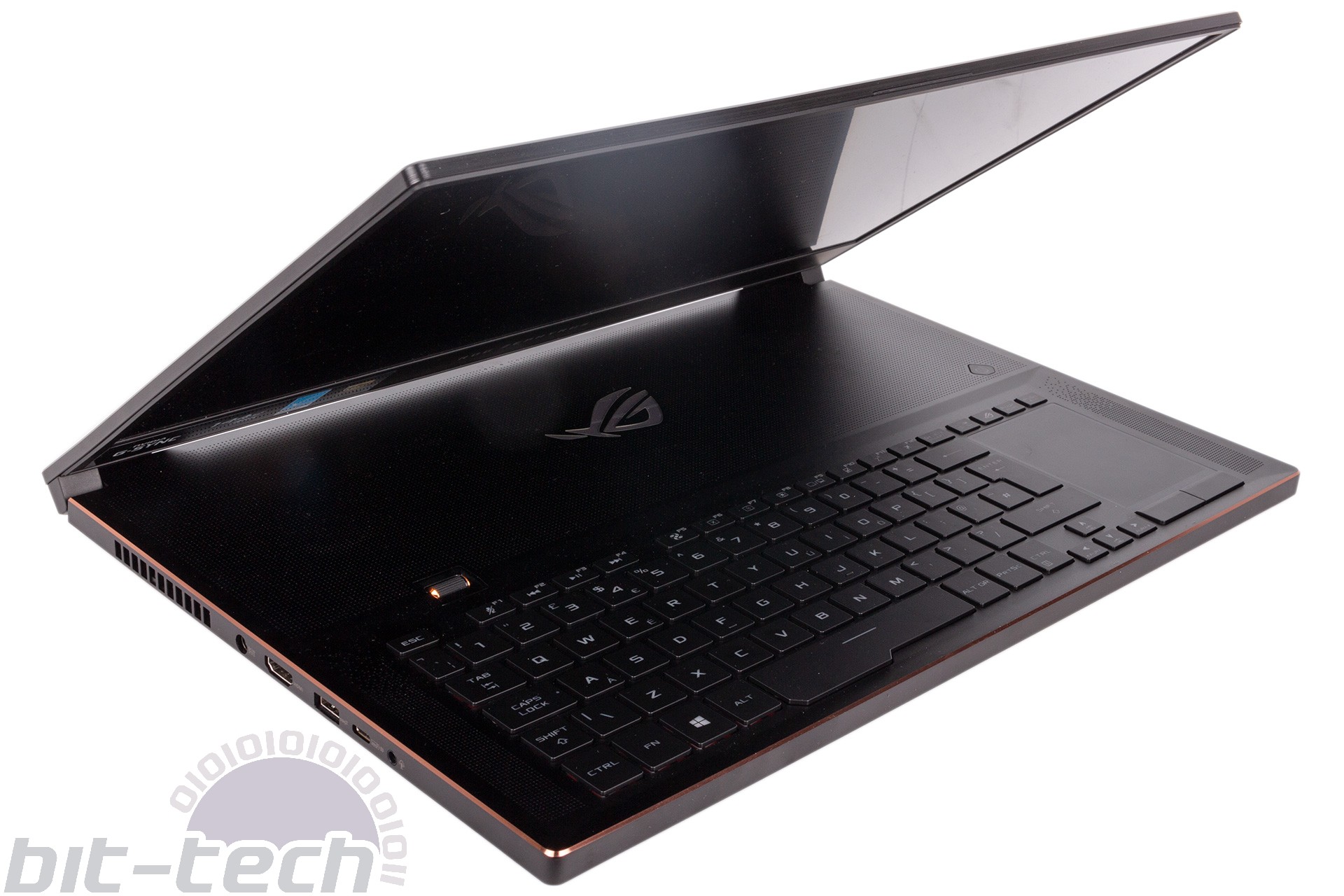
At 399mm wide, 272mm deep, and under 19mm thick, the Zephyrus S GX701 is small as 17” laptops go, and the weight of 2.7kg makes it acceptable for taking it from A to B. That’s hardly something you’ll want to do daily, but that’s also not really the point of a 17” form factor, which is better suited to desktop replacement duties.
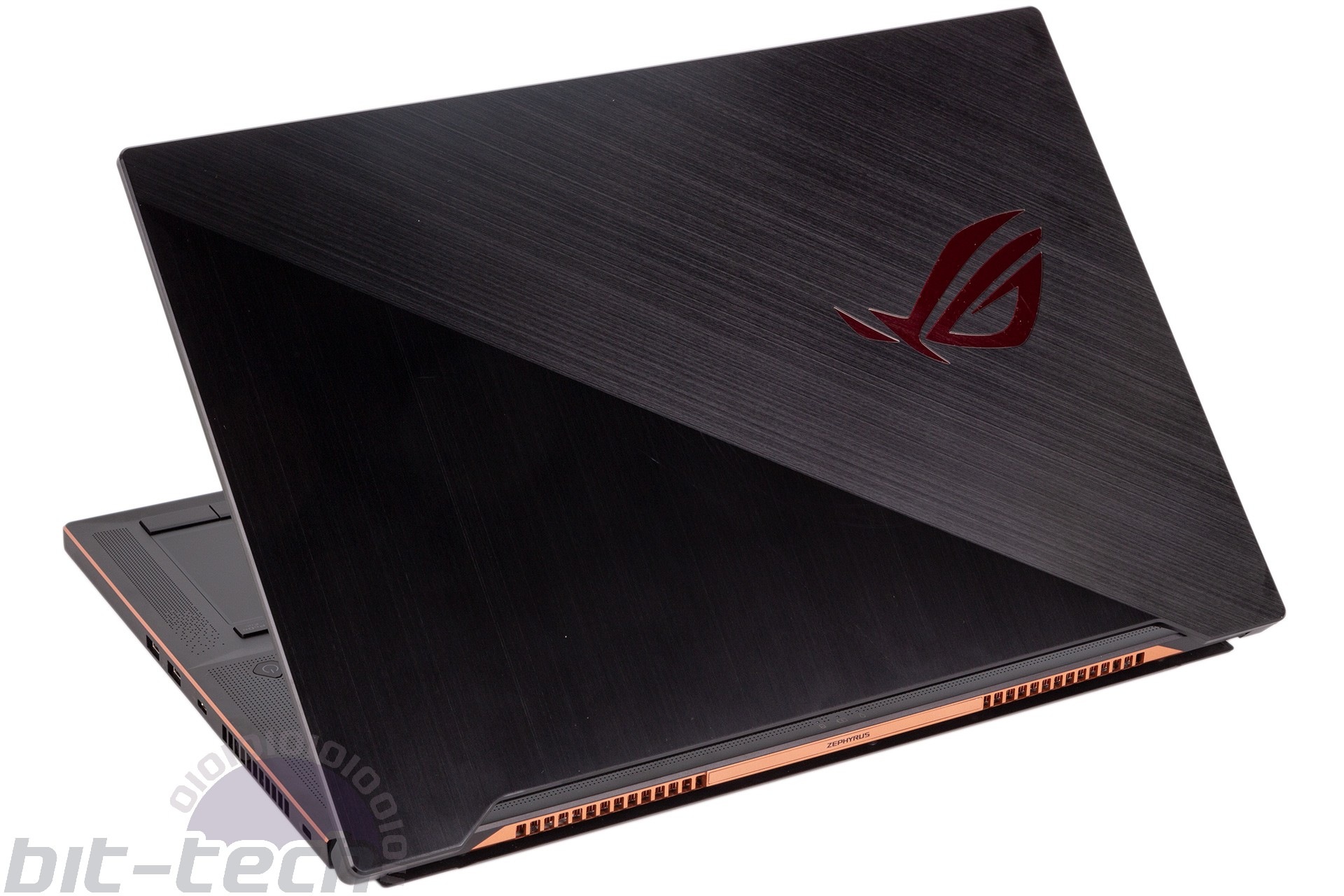
The outer shell is clad in a magnesium alloy, and this is given an attractive brushed finish on the lid. The shiny ROG logo and bronze trim are stylish additions that bling things up without becoming tacky. The unit is mostly very well built and solid all around. The hinge is smooth enough to allow you to open the laptop one-handed, with the rubber pads underneath helping to prevent the bottom slipping around.

It’s as you open it that the cooling-focused design choices mentioned earlier become obvious. The Zephyrus S GX701 has a hinged panel on the underside instead of the usual vents, which opens up and raises the laptop slightly as you open the lid, creating a sizeable gap through which air is exhausted in addition to the more regular side vents. This looks odd, but of more concern is that the plastic panel is somewhat flimsy.

Traditionally, the underside is the intake area, but Asus has used the upper side instead, which leads to a very odd looking laptop whereby the keyboard is shifted all the way to the front to make way for the intake vents. This will boost access to cool air considerably, but at what cost?
The keyboard’s position makes the laptop somewhat impractical to use on-the-go. Trying to use that keyboard with the laptop on your lap or even on a table without sufficient depth (like those on trains and planes) quickly becomes a wrist workout. Although we acknowledge that those with the funds to purchase such a laptop are likely to also have a premium mechanical keyboard for desk use, a wrist rest for the keyboard would have been a suitable inclusion. We used one from a keyboard we had lying around and immediately felt less concerned about the odd position.

The keyboard itself is well designed with a series of useful shortcuts accessed via the FN key and well spaced if compact arrow keys. Even better is that you get a numpad. Where? The trackpad, of course! This has been shunted to the right, (making it slimmer than you might prefer), and a small key above it lets you switch to numpad mode, with red lighting helping to guide your fingers. The lack of tactility means it’s no substitute for the real thing, but it’s superior to using the upper number keys for data entry. Our only complaint about the keyboard is that the RGB lighting, although bright, doesn’t do a good job illuminating secondary symbols. The built-in volume wheel with click-to-mute is also a bit of an eyesore, but you may disagree, so we won’t get too hung up on it.
The keyboard is flanked by a pair of 2.5W speakers; these are fine as laptop speakers go, but headphones and dedicated speakers will be far better.
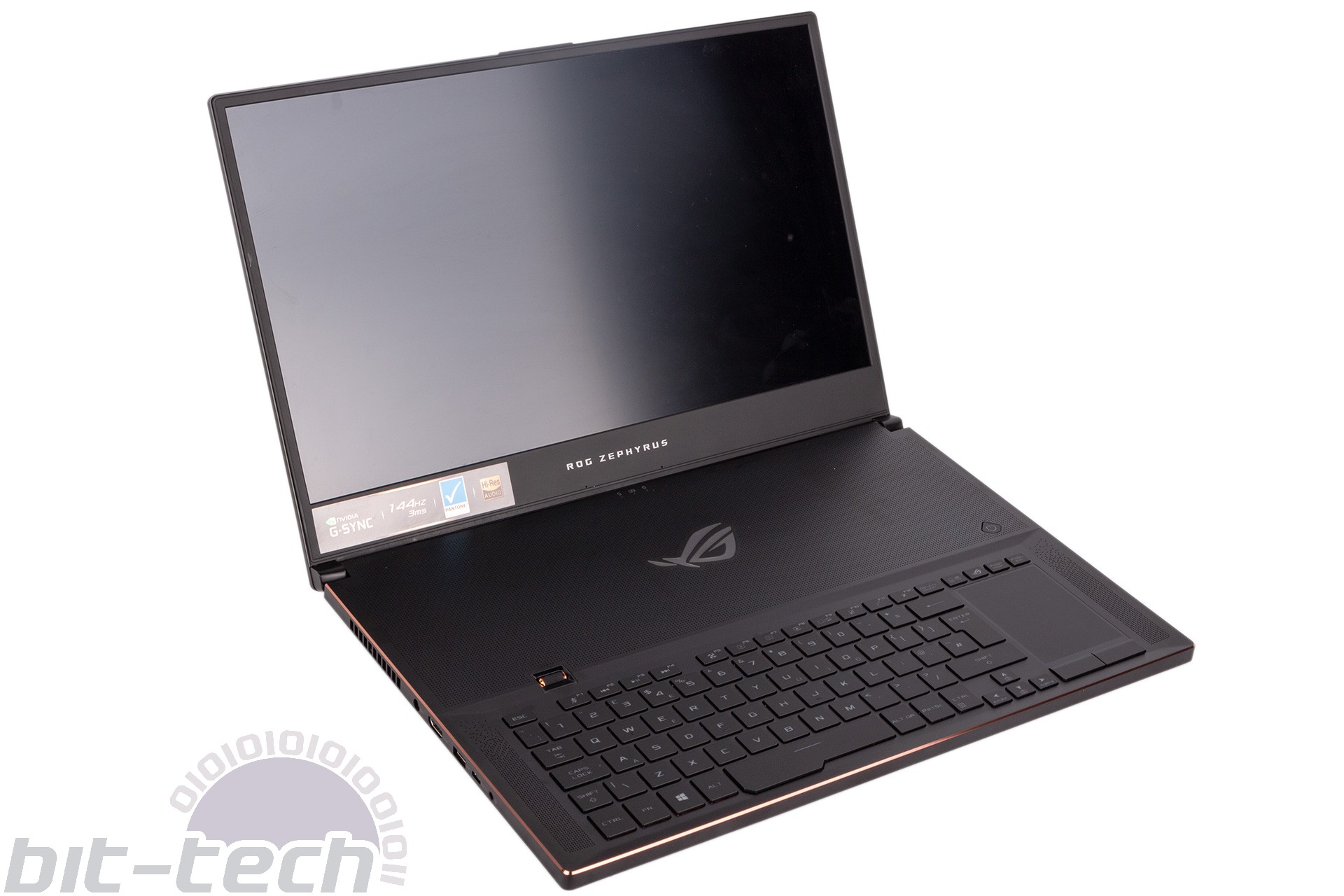
The so-called ‘IPS-level’ panel is “only” 1,920 x 1,080, but this is perfectly sharp enough for laptops in our opinion, even at 17”; any higher and you are more likely to need scaling within Windows and place a great deal more stress on the GPU for little perceived benefit, though we’d be keen to see what 1440p looks like. Nevertheless, sticking to 1080p will allow the RTX 2080 to make use of the awesome 144Hz refresh rate in practically any title with maximum settings. Better yet, the screen has G-Sync, and each unit meets certain Pantone colour validation requirements, though these aren’t detailed. A claimed 3ms response time should minimise input lag.
The Zephyrus S GX701 has a nifty trick up its sleeve, which is the ability to pick between Nvidia Optimus and Nvidia G-Sync. Optimus is what allows a laptop to auto-switch between the discrete GPU and integrated graphics to save power, but G-Sync laptops typically don’t support it on account of G-Sync always needing the discrete GPU to be engaged. Here, however, Asus deploys an exclusive switch that allows you to pick between the two, so you can enjoy G-Sync when plugged in and higher battery life on-the-go. The system does need to be rebooted when changing modes, however.
The screen’s 6.9mm bezels help keep the overall dimensions down. Part of achieving this is the removal of an onboard webcam. This is a worthy trade-off in our opinion, and Asus supplies a discrete, USB-powered one for those that need it. Offering 1080p, 60fps capture, this can be mounted to the top of the screen and angled, giving streamers a chance to show off their best side rather than their nostrils. The micro-USB cable should be longer but is easily replaced.
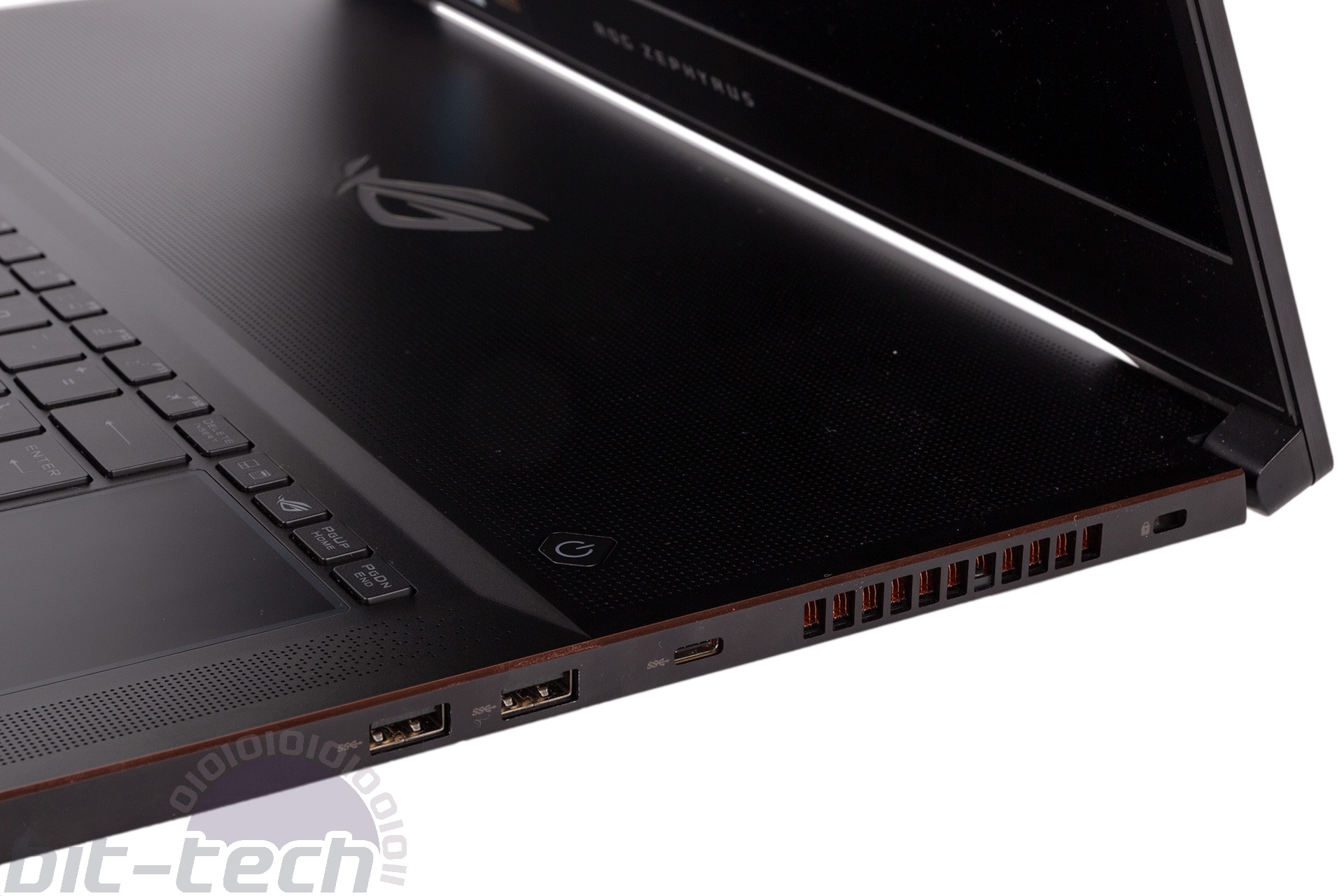
With the rear unavailable, I/O ports are all side-facing, which is fine by us. In total there are three USB Type-A ports and two USB Type-C ports, a healthy mix. You get at least one of each type on both sides too, but only the left side has the ports with true USB 3.1 Gen 2 (10Gbps) speeds. The Type-C connector here also supports DisplayPort over USB-C, enabling DP1.4 connectivity and power delivery up to 100W for use with external batteries. You also get one HDMI 2.0b connector and a four-pole audio jack. Sadly, there’s no LAN port and no SD reader. Meanwhile, 802.11ac Wi-Fi is handled by a Killer Wireless AC 1550i card.
Intel’s Core i7-8750H offers six cores and 12 threads with a 45W power envelope and is common among gaming laptops – it’s a de facto choice and for good reason. Or perhaps we should say it was; the Core i7-9750H has since supplanted it, and this laptop is now available with the newer 9th Gen chip. The differences are slim, however, so if you can still pick up the 8th Gen version you really won’t be missing out on much.
Similarly, Asus now offers the Zephyrus S GX701 with up to 32GB of DDR4 compared to 24GB with this version. Our review sample has the old maximum of 24GB, made up of 8GB soldered to the board (16GB in the newer one) and 16GB in a single SODIMM module, but the 16GB version (8GB soldered, 8GB SODIMM) is more common to see for sale, and is definitely the better choice for a gaming-focused machine anyway. The 2,666MHz memory speed has not changed in the refresh, this being the maximum speed that the two CPUs support. Either way, we’d prefer it if Asus had be able to squeeze in two proper SODIMM slots.

The RTX 2080 Max-Q is the same as you’d find in a desktop card in terms of core counts and carries full support for AI-enhanced visuals and real-time ray tracing, but the thermally-optimised Max-Q form factor carries with it a power limit that impacts the core and memory clock speeds compared to non-Max-Q chips. Asus uses the higher-spec Max-Q variant with a 90W TDP (an 80W one is also available elsewhere), giving it base/boost clock speeds of 990MHz/1,230MHz, but by default a 100MHz overclock is applied to both whenever the laptop is plugged in. The memory runs at 12Gbps (slight OC when plugged in), down from 14Gbps on non-Max-Q RTX 2080s but still very fast. A 230W DC charger ensures there will be sufficient available power when you have the laptop plugged in.
This is by no means an easy laptop to open up, but we know from Jarrod’s Tech video that the Zephyrus S GX701 only has a single M.2 slot onboard and a single SODIMM slot, both of which are occupied, so you’re not missing out on much. The M.2 slot is occupied by a 1TB PCIe 3.0 x4 NVMe SSD, which has ample room for a decent collection of AAA titles. Leaving out a 2.5” drive makes sense given the design priorities, but it’s a shame a secondary M.2 slot isn’t onboard.

Also inside is a 76Wh battery which is a good capacity for the size but not outstanding. What matters more, however, is how well Asus can manage the power across the unit and the overall battery life – see our performance testing for that.
Windows 10 Pro is installed on the 1TB SSD, and thankfully that’s nearly the sum of it. The Asus Armoury Crate system control software is worth keeping, and the McAfee trial software is easily uninstalled; it’s otherwise free from unnecessary extras.
Armoury Crate lets you manage the power modes. On battery, you can swap easily between Silent and Balanced modes; plugged in, you have these plus Turbo and Manual modes. The former is the default when plugged in and is what overclocks the GPU, while the latter lets you control the peak speeds of both internal fans and dabble in manual GPU overclocking. Up to 200MHz can be added to the core, and the memory can also be overclocked to a maximum of 12.3Gbps, a modest 2.5 percent boost. Armoury Crate also has controls for the keyboard’s RGB lighting.
Specifications (as reviewed)
- CPU Intel Core i7-8750H (2.2GHz base, 4.1GHz Turbo)
- CPU threads 12 (hexa-core with Hyper-Threading)
- Memory 24GB (1 x 8GB soldered, 1 x 16GB SODIMM) 2,400MHz DDR4
- Graphics Nvidia GeForce RTX 2080 Max-Q
- Storage 1 x 1TB M.2 PCIe 3.0 x4 NVMe SSD
- Screen 17" 'IPS-level', 1,920 x 1,080, 144Hz, G-Sync/Optimus toggle, X-Rite Pantone certified
- Dimensions (mm) 399 x 272 x 18.7 (W x D x H)
- Networking Killer Wireless AC 1550i 802.11ac Wi-Fi, Bluetooth 5.0
- Audio 2 x 2.5W speakers
- Keyboard backlighting RGB per-key (Asus Aura Sync)
- Battery Li-Ion, 76Wh
- Webcam No (micro-USB discrete webcam with FullHD, 60fps is supplied)
- Weight 2.7kg
- Operating system Windows 10 Pro 64-bit
- Ports 1 x DisplayPort over USB-C 3.1, 1x USB 3.1 Type-A, 1 x USB 3.0 Type-C, 2 x USB 3.0 Type-A, 1 x HDMI
2.0b, 1 x 3.5mm
headphone/microphone combined jack
- Warranty Two years

MSI MPG Velox 100R Chassis Review
October 14 2021 | 15:04

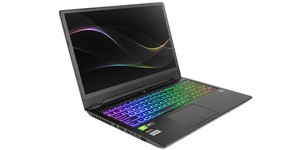

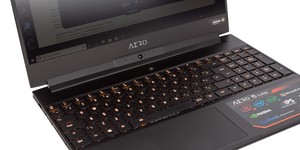





Want to comment? Please log in.